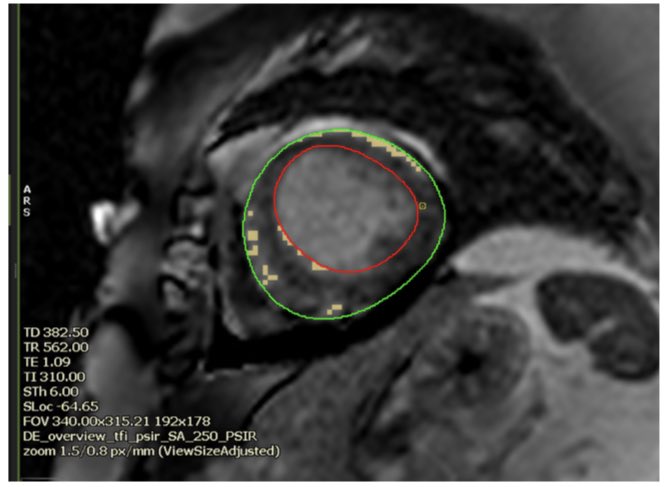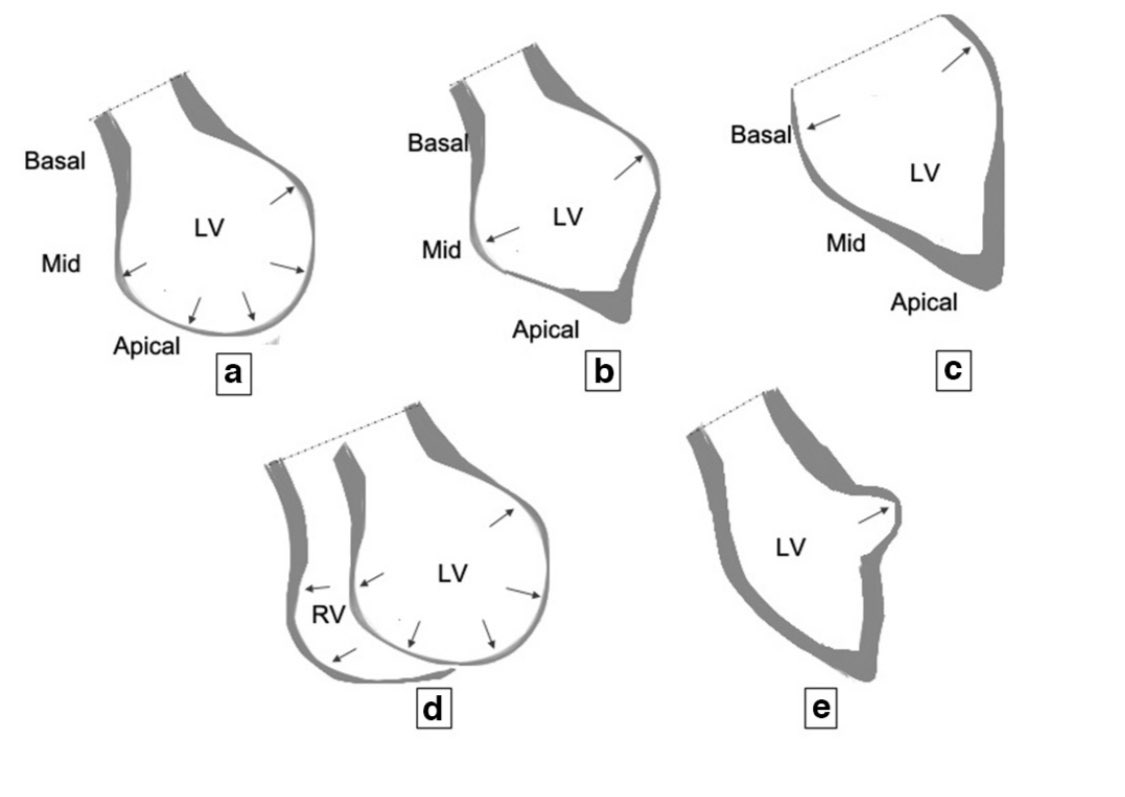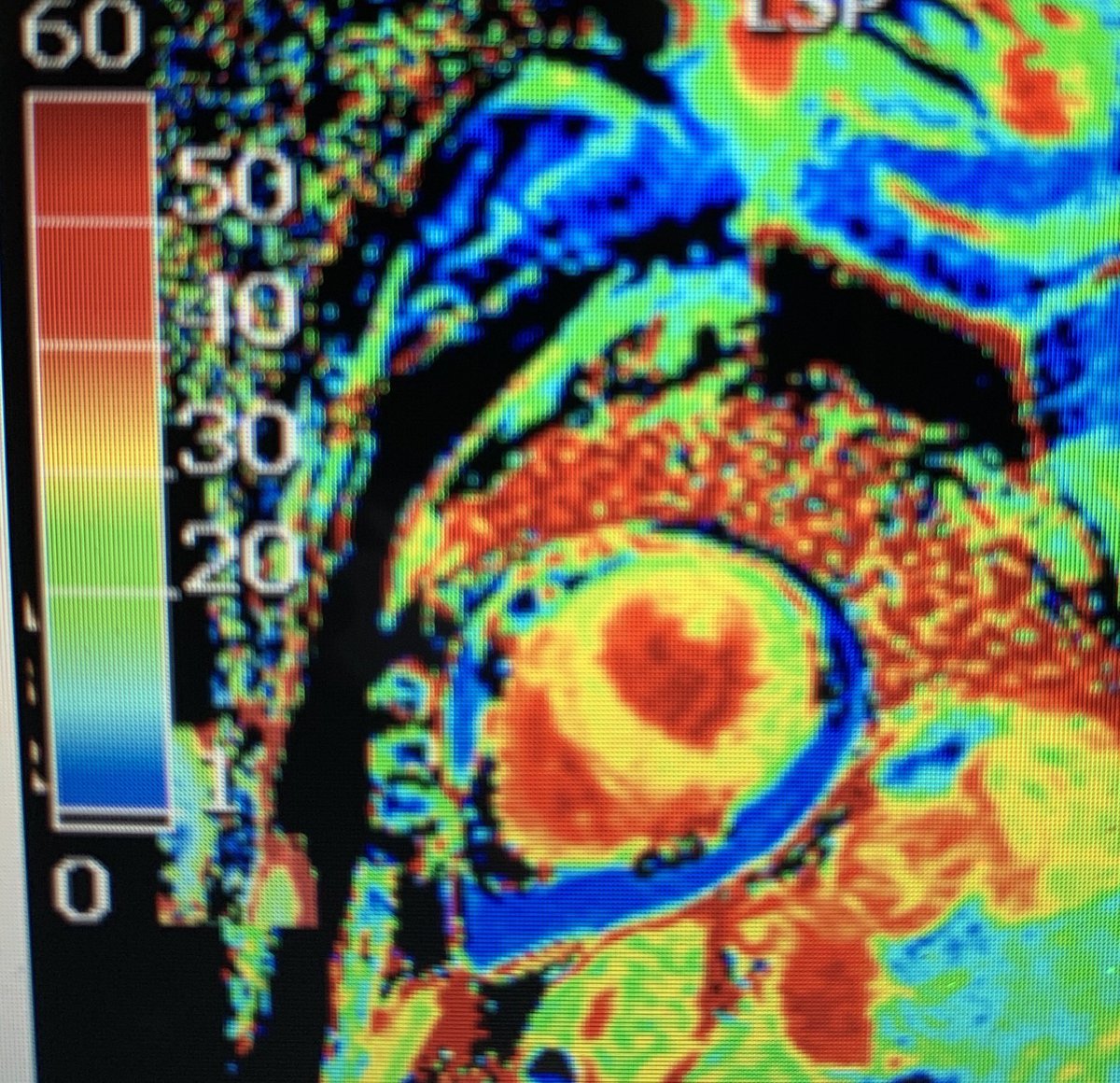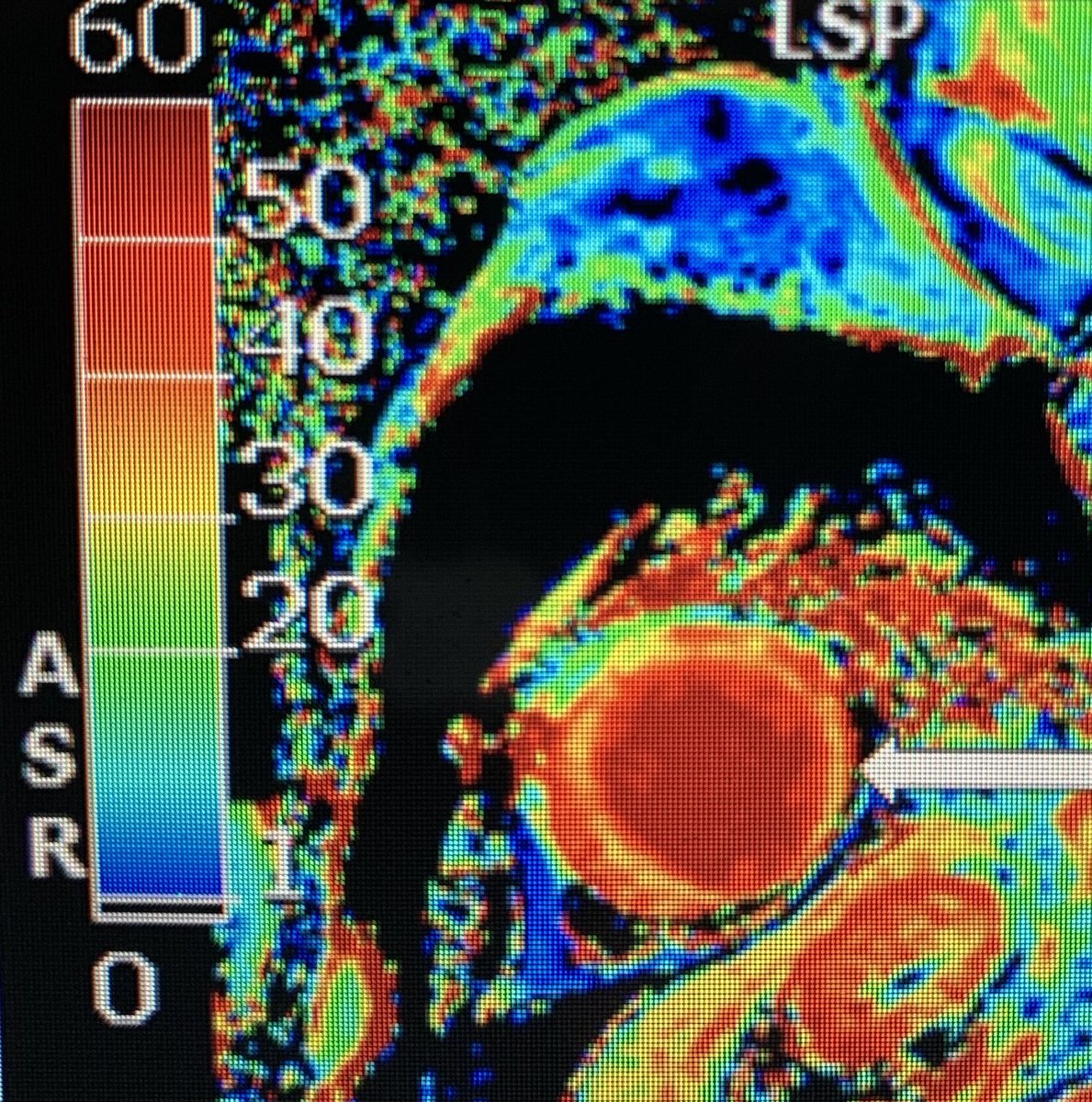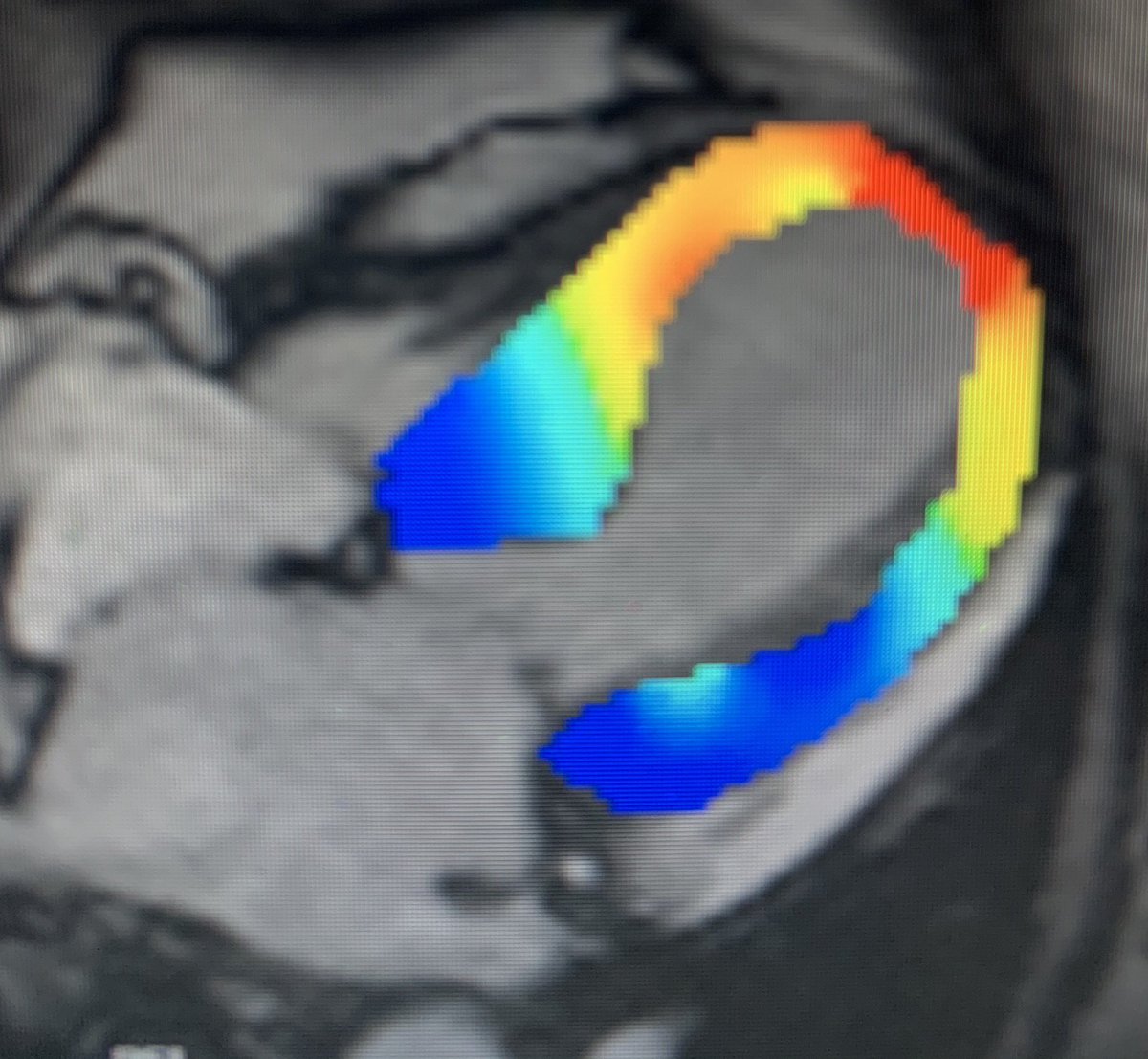#whyCMR case: 78y/F, signs of ACS, normal coronary angiogram, CMR done. #SCMRAweSoMe @scmrorg @chiarabd @purviparwani @PushpaShivaram @AmroAlsaid @danilorenzatti @Kfarooqi @RayRcnita @JStojanovskaMD @DrJenniferCo_Vu @ydaryani @OKhaliqueMD @AScatteia @AKallifatidis @DmmOsmany
@JoaoLCavalcante @rajdoc2005 @HeartDocSubha @mugander @Doc_Tiger @MasriAhmadMD @pritixyz @EylemLevelt @Sarah_Moharem @DrRyanPDaly @rladeiraslopes @DrFuisz @KimAtianzar @tiffchenMD @cshenoy3 @rooshaparikh @AChoiHeart @onco_cardiology @AkhilNarangMD @heartdockumar @ash71us
#whyCMR LGE at +3SD threshold, none at +5 SD threshold @circlecvi @drkartikganga @avinash230791 @Ahmed43101178 , raised T1 and T2 mapping values
raised T1 and T2 mapping values
 raised T1 and T2 mapping values
raised T1 and T2 mapping values
Role of #whyCMR in Takotsubo CM (TC):  reversible
reversible  transient LV dysfunction
transient LV dysfunction  most commonly basal hyperkinesis and mid-apical
most commonly basal hyperkinesis and mid-apical
LV ballooning and hypokinesia (a) other phenotypes may be present (b-d)
other phenotypes may be present (b-d)  diffuse edema/raised T2
diffuse edema/raised T2
https://www.birpublications.org/doi/abs/10.1259/bjr.20200514
 reversible
reversible  transient LV dysfunction
transient LV dysfunction  most commonly basal hyperkinesis and mid-apical
most commonly basal hyperkinesis and mid-apicalLV ballooning and hypokinesia (a)
 other phenotypes may be present (b-d)
other phenotypes may be present (b-d)  diffuse edema/raised T2
diffuse edema/raised T2 https://www.birpublications.org/doi/abs/10.1259/bjr.20200514
#whyCMR in TC: absence of LGE (at +5SD threshold) , but recent studies suggest LGE may be present
absence of LGE (at +5SD threshold) , but recent studies suggest LGE may be present  T1 and ECV mapping detect diffuse ECM abnormalities- here ECV normal at basal LV, increased at apical LV
T1 and ECV mapping detect diffuse ECM abnormalities- here ECV normal at basal LV, increased at apical LV strain can help detect myocardial deformation abnormalities
strain can help detect myocardial deformation abnormalities
 absence of LGE (at +5SD threshold) , but recent studies suggest LGE may be present
absence of LGE (at +5SD threshold) , but recent studies suggest LGE may be present  T1 and ECV mapping detect diffuse ECM abnormalities- here ECV normal at basal LV, increased at apical LV
T1 and ECV mapping detect diffuse ECM abnormalities- here ECV normal at basal LV, increased at apical LV strain can help detect myocardial deformation abnormalities
strain can help detect myocardial deformation abnormalities
More pertinent now as TC should also be considered in the differential diagnosis across the spectrum of myocardial injury in patients presenting with #COVID19. @JACCJournals
https://casereports.onlinejacc.org/content/2/9/1321
https://casereports.onlinejacc.org/content/2/9/1321
https://www.sciencedirect.com/science/article/pii/S2666084920306641
https://casereports.onlinejacc.org/content/2/9/1321
https://casereports.onlinejacc.org/content/2/9/1321
https://www.sciencedirect.com/science/article/pii/S2666084920306641

 Read on Twitter
Read on Twitter